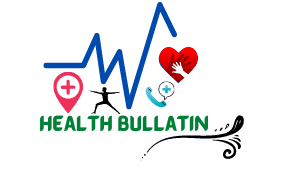Pain can come in many different forms, but the bottom line is that it’s your body’s way of telling you that something isn’t quite right. If you experience an injury or disease, pain may be your only way of knowing about it until it’s too late to do anything about it. Pain can range from mild to severe, and can even come in an array of different types. That said, there are 10 common types of pain that are worth recognizing and understanding how to deal with.
Aches
When we talk about minor aches and pains, we’re talking about things like exercise-induced soreness, lower backaches, muscle fatigue. And while these are often simply experienced as such (exercise-induced soreness), sometimes they can be quite severe. This type of ache or pain is considered acute and generally will go away after rest.
Stiffness
Whether due to aging, a recent injury, or just a bad night’s sleep, stiffness can be one of your body’s less-fun status messages. Stiffness usually feels like an overall tightness that makes it hard to bend and twist. It’s one of those ailments that are not always easy to trace back to its cause.
Fatigue
Pain and fatigue are both responses to inflammation, with fatigue often being a result of muscle weakness. Often linked to autoimmune disorders, headaches, and more, fatigue is an extremely broad term. What causes it is different for everyone but because a number of factors can lead to fatigue — like diabetes, dehydration, or thyroid disorders — working out how best to treat your symptoms is important. Research what causes your particular case of fatigue and talk to your doctor about it.
A Tingling Sensation
If you’re suffering from a tingling sensation, your nerve fibers are sending out electrical signals at an unusually high frequency. Muscle spasms and migraine attacks fall into this category. The feeling can be anything from burning to numbness, but never sharp or stabbing. Neurologists call it paresthesia and as well as being a symptom in its own right, it can also be a sign that something is wrong elsewhere in your body.
Weakness
When it hurts to move, you’re experiencing weakness. When weakness sets in, it’s a sign that there’s an underlying problem with your nervous system, muscles, or joints. This can be due to nerve damage, diseases that affect your motor neurons, or illnesses like Guillain-Barré syndrome (GBS). You should see a doctor immediately if you experience weakness in any part of your body – or if there is a change in any existing weakness.
Numbness
If your whole hand or foot feels numb, you may have a pinched nerve in your neck. Pinched nerves can also cause tingling and itching sensations that start in one hand or foot and move to another. For example, if you have carpal tunnel syndrome, which is caused by pressure on your median nerve, you might feel tingling in your thumb, index finger, and middle finger on one side before it spreads to other fingers and into your palm. You might also feel burning in your affected thumb.
Burning Pain
This type of pain, which is sharp and stabbing, often feels like it’s coming from a specific area. It can be caused by friction or pressure on a nerve, infection or inflammation in nearby tissue or skin or injury. When burning sensations occur suddenly in places that are usually sensation-free, such as your palms and soles of your feet, they may be due to serious conditions such as diabetes.
Sharp Pain
When something—an object, body part, muscle, or tendon—pokes or irritates your skin. Pain typically lasts less than 20 minutes and is a sharp, localized sensation. The best way to treat sharp pain is to address its underlying cause as soon as possible. If you injure yourself while running in shorts on a hot day, remove your clothing immediately and apply cold compressions with ice packs or frozen vegetables.
Clumsiness / Impaired Coordination
Impaired coordination is characterized by an inability to control one’s own limbs. Patients report that their arms and legs feel heavy or even numb. The sensation can be likened to driving a car with stiff brakes — it can take a great deal of effort just to stop, let alone move forward. It typically affects both sides of your body symmetrically; for example, you may experience impaired coordination in both hands or both feet.
Headaches / Migraines
The word migraine comes from Greek and Latin words meaning half-pain, a reference to the fact that a migraine attack typically involves only one side of your head. For sufferers, it can mean a world of difference between bright lights and crippling pain, so what causes migraines? According to The Migraine Trust, there are four main triggers

